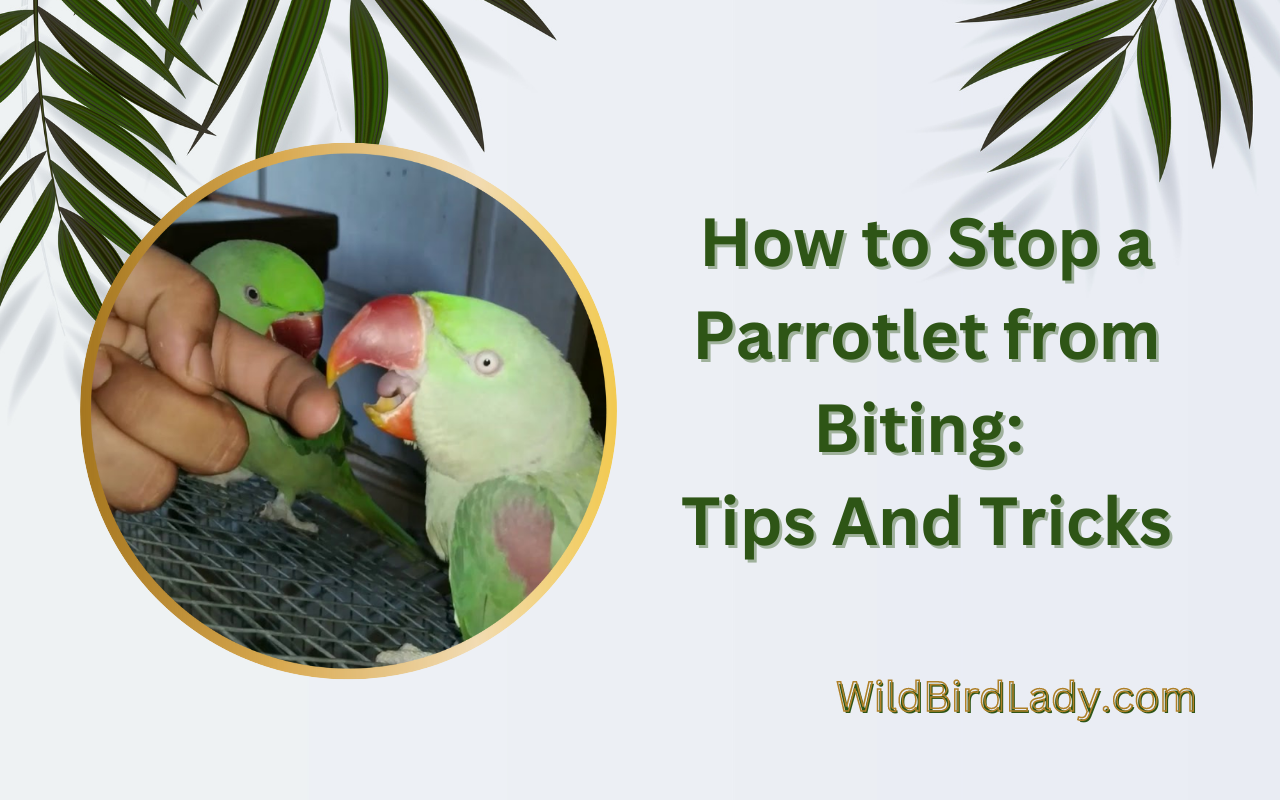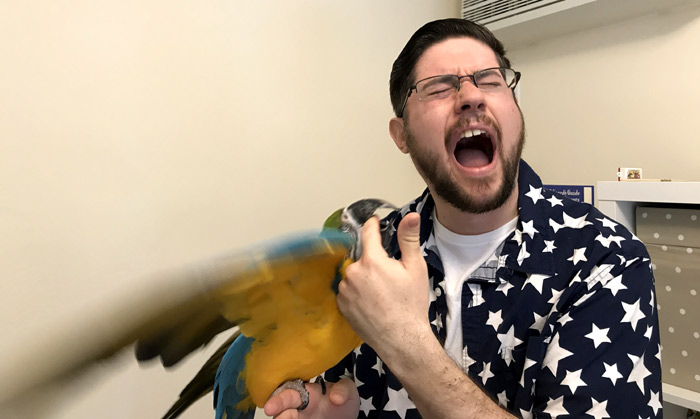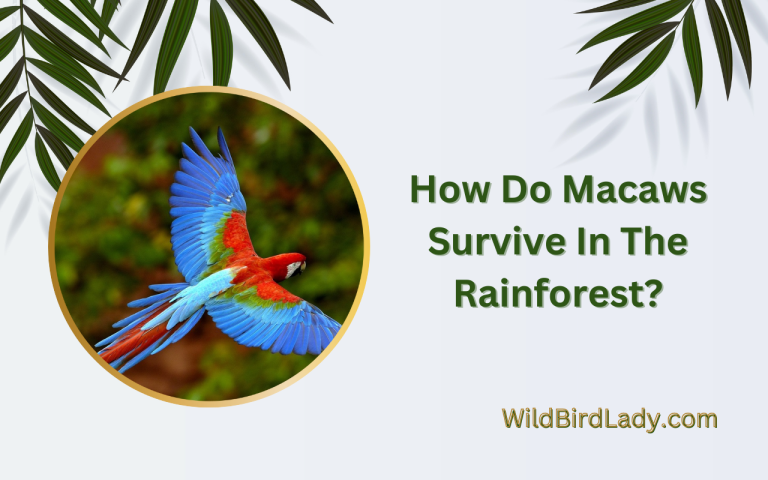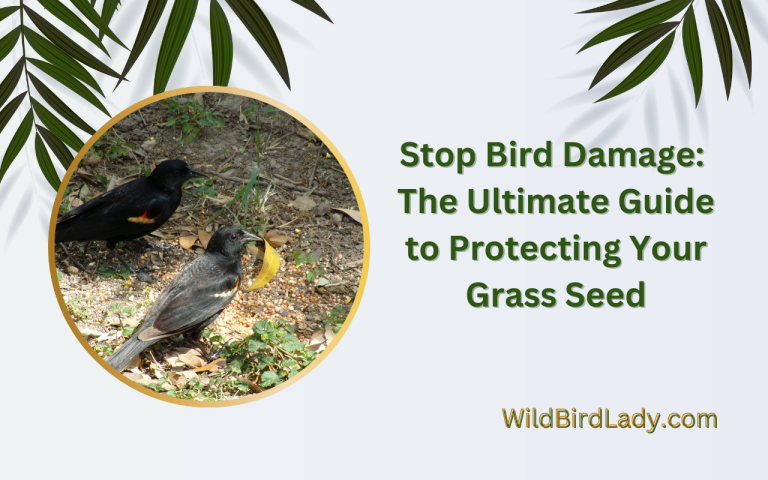How to Stop a Parrotlet from Biting: Tips And Tricks
To stop a parrotlet from biting, distract it with toys or treats, avoid making sudden movements, and provide socialization and training. Parrotlets are intelligent birds that require mental and physical stimulation to prevent aggression and behavioral problems.
In this article, we will discuss some tips and tricks to stop your parrotlet from biting and ensure a healthy and happy life for both you and your feathered friend. From understanding the reasons behind biting behavior to practicing positive reinforcement techniques, we will cover everything you need to know to prevent your parrotlet from biting.
With patience and persistence, you can train your parrotlet to be a loving and well-behaved companion for years to come.
Understanding Parrotlet Behavior
Parrotlets are intelligent and curious creatures with big personalities, but they can also have some aggressive tendencies. Understanding their behavior is key to stop them from biting. Here are some essential things you need to know:
Characteristics Of Parrotlets That Are Prone To Biting
- Territorial behavior: Parrotlets are incredibly territorial by nature, and they get easily agitated when they feel that their space or belongings are being violated. This can lead to biting to defend their territory.
- Fear or stress: When parrotlets feel threatened or frightened, they may resort to biting as an act of self-protection. This behavior can arise from loud noises, new environments, or sudden movements.
- Mating season: Parrotlets have a strong breeding instinct, and during the breeding season, they become more territorial, possessive, and aggressive than usual. This behavior may lead to biting attempts, especially towards those they perceive as a threat to their mate or nest.
Common Reasons Why Parrotlets Bite
- Lack of socialization: Parrotlets that have not been socialized or handled regularly can develop biting tendencies as a way to assert their dominance when approached by humans.
- Lack of training: Parrotlets are intelligent creatures and require proper training to understand the boundaries of what is acceptable behavior. Without training, they may resort to aggressive tendencies, such as biting.
- Attention-seeking behavior: Parrotlets may resort to biting behaviors to get attention or demand attention from their owners.
How Parrotlet Behavior Can Be Influenced By The Environment And Owner Behavior
Parrotlets’ behavior can also be heavily influenced by their environment and how their owners interact with them. Factors that can affect their behavior include:
- Noise and commotion: Loud environments and sudden movements can cause fear and stress in parrotlets, leading to biting attempts. Ensure that your parrotlet has a quiet and calm environment to reduce stress levels.
- Handling and training: Proper training and handling of parrotlets are crucial to shaping their behavior positively. Reward positive behavior and discourage negative behavior.
- Owner behavior: The way owners interact with parrotlets can heavily influence their behavior. If owners laugh or reinforce negative behavior, such as biting as cute or amusing, parrotlets may continue such behavior. It is essential to discourage negative behavior and follow positive reinforcement techniques.
Understanding parrotlet behavior is vital to stop them from biting. By knowing why they bite and what triggers such behavior, owners can work towards creating safe and positive environments for their beloved parrotlets.
Basic Training Techniques
Teaching Your Parrotlet To Step Up And Come To You
One of the most basic yet fundamental things to teach your parrotlet is the “step up” command. This command gets your feathered friend to climb onto your finger or a perch. It’s important to establish this command early on in your training as it forms the foundation for other more advanced commands.
To train your parrotlet to step up, follow these simple steps:
- Hold your finger or a perch in front of your bird and wait for them to step onto it.
- Use the command “step up” in a calm and firm tone.
- Reward your parrotlet with a treat, affection, or praise when they step up.
Positive Reinforcement Training Methods
Positive reinforcement is a training technique that focuses on rewarding your parrotlet for good behavior. It’s a more effective and humane approach compared to using punishment or negative reinforcement. By using positive reinforcement, your parrotlet will associate good behavior with positive outcomes and become more motivated to continue these actions.
Examples of positive reinforcement include giving treats, verbal praise, or physical affection.
When you use positive reinforcement, remember these tips:
- Reward your parrotlet immediately after they perform a positive action or command.
- Be consistent in your rewards to avoid confusion and maintain good behavior.
- Use a variety of rewards to keep your parrotlet interested and motivated.
How To Discourage Biting Through Repetition And Patience
Biting is an instinctive behavior in parrotlets that can result from fear, aggression, or territoriality. However, with repetition and patience, it’s possible to discourage this behavior. One effective method is to redirect your parrotlet’s beak onto a toy or another object when they attempt to bite you.
This teaches them that biting is not acceptable and allows you to avoid potential injuries.
Here are some additional tips on how to discourage biting:
- Avoid punishing your parrotlet as it can make them more aggressive.
- Stay calm and avoid giving your parrotlet attention when they behave aggressively.
- Use positive reinforcement to reward your parrotlet for good behavior.
The Importance Of Consistency In Training
Consistency is key in parrotlet training. It’s important to establish routines and stick to them to avoid confusing your bird. Be consistent in your training commands, rewards, and behavior to effectively communicate with your parrotlet. This allows them to understand what you expect from them and what behaviors will lead to rewards.
To maintain consistency in your training, follow these tips:
- Train your parrotlet at the same time every day.
- Use the same tone of voice when giving commands.
- Reward your parrotlet for good behavior consistently.
By following these basic training techniques, you can effectively train your parrotlet and discourage bad behavior. Remember to be patient and consistent in your training to establish a long-lasting bond with your feathered friend.
Advanced Training Techniques
Parrotlets are charming little birds that have become popular pets for their affectionate personality and vibrant colors. However, they have a tendency to nip at their owners, making it difficult to handle them. If you are one of those pet owners trying to stop your parrotlet from biting, here are some advanced training techniques that can help you achieve your goal.
Teaching Parrotlets To Respond To Specific Commands
Teaching your parrotlet specific commands can be a great way to redirect their biting behavior and encourage positive interaction. Here are some tips to follow:
- Choose commands that are easy to remember and understand, such as “step up” or “stay.”
- Always use a positive tone when teaching your parrotlet new commands.
- Use treats as a reward for following your commands correctly.
- Consistency is key when it comes to training parrotlets or any pets.
How To Train Your Parrotlet To Socialize With Other Pets And Humans
Training your parrotlet in socialization skills can help them get along better with humans and other animals. Here’s how you can do that:
- Introduce your parrotlet to new people and pets in a gradual and controlled manner, ensuring that they are comfortable and not overwhelmed.
- Encourage curiosity, allowing your parrotlet to approach new people and pets on their terms.
- Reward your parrotlet’s positive social behavior with attention or treats.
- Be careful when introducing your parrotlet to other birds or animals, especially those that are bigger than them.
Using Interactive Toys As A Form Of Training
Interactive toys can be a great way to train your parrotlet, keeping them engaged and entertained. Here’s how you can use interactive toys to train your parrotlet effectively:
- Choose interactive toys that are appropriate for your parrotlet’s size, age, and personality.
- Always supervise your parrotlet when using interactive toys.
- Introduce new interactive toys gradually, ensuring that your parrotlet is comfortable with them.
- Use treats as a positive reward for using interactive toys correctly.
Building Trust With Your Bird Through Daily Interaction
Building trust with your parrotlet is essential if you want them to stop biting and become more comfortable with you. Here’s how you can build trust with your parrotlet:
- Start with short interactions, talking to your parrotlet and offering them a treat.
- Gradually increase the duration and frequency of your interactions with your parrotlet.
- Handle your parrotlet gently and with care, avoiding sudden movements or loud noises.
- Reward your parrotlet for good behavior, such as being calm and non-aggressive.
Advanced training techniques can be an effective way to stop your parrotlet from biting. By using specific commands, encouraging socialization, utilizing interactive toys, and building trust, you can build a stronger bond with your parrotlet while improving their behavior. Remember to maintain consistency, use positive rewards, and be patient in your approach to achieve the best results.
Creating A Safe Environment
Creating A Safe Environment For Your Parrotlet
Parrotlets are known for their biting behavior. It can be challenging to stop them from biting, but creating a safe and comfortable environment for them can help minimize this behavior. Here are a few essential tips for providing a safe environment for your parrotlet.
The Importance Of Cage Placement And Visibility
- Place the cage in a quiet, low-traffic area of the house.
- Make sure your parrotlet’s cage is placed at eye level so that they can see you.
- Do not place the cage near windows or doors where there may be drafts or excessive sunlight.
- Make sure the cage is secure and stable and cannot be knocked over.
How To Provide Plenty Of Exercise And Mental Stimulation For Your Parrotlet
- Provide toys within the cage for mental stimulation and entertainment.
- Give your parrotlet roughly 30-60 minutes of playtime outside the cage every day.
- Rotate the toys every few days to prevent boredom.
- Provide perches of different sizes and textures for exercise and foot health.
Importance Of A Balanced Diet And Proper Nutrition
- Feed your parrotlet a mix of high-quality pellets, seeds, fruits, and vegetables.
- Consult with your veterinarian or an avian nutritionist for a customized diet plan.
- Avoid feeding your parrotlet avocado, chocolate, caffeine, and alcohol.
- Offer fresh water daily and replace or clean the water dish regularly.
Ensuring Adequate Rest And Sleep For Your Parrotlet
- Provide a comfortable sleeping area for your parrotlet in a quiet and dark room.
- Cover the cage with a light-weight, breathable cover to create a quiet and dark environment for sleeping.
- Ensure that your parrotlet has at least 10-12 hours of restful sleep each night.
- Avoid loud noises and sudden movements that may disturb your parrotlet’s sleep.
By creating a safe and comfortable environment for your parrotlet, you can help prevent biting behavior and provide them with a happy and healthy life. Remember to consult with your veterinarian for personalized recommendations and follow these tips to ensure your parrotlet’s well-being.
Seeking Professional Assistance
When To Consider The Help Of A Professional
If you’ve tried all the tips and tricks mentioned earlier and still can’t seem to stop your parrotlet from biting, it’s time to seek professional help. Here are some signs to look out for:
- Your parrotlet has developed aggressive behavior that is beyond your control.
- Your parrotlet persistently bites and shows no sign of stopping.
- You have noticed signs of physical discomfort or illness in your parrotlet that might be causing the biting behavior.
- You’ve attempted behavior modification techniques, but your parrotlet still bites.
- You’re not sure what’s causing the biting behavior, but it’s causing you and your bird distress.
How To Find An Experienced Avian Veterinarian
Finding the right avian veterinarian can be crucial to your bird’s overall healthcare and happiness. Here are some tips:
- Ask for recommendations from other bird owners or local bird clubs.
- Look for a vet who specializes in avian care.
- Research the vet’s credentials and experience.
- Schedule a pre-appointment consultation to get a feel for the vet’s approach and personality before committing.
The Benefits Of Working With A Certified Bird Trainer Or Behaviorist
Working with a certified bird trainer or behaviorist can be a game-changer for parrotlet owners struggling with biting behavior. Here’s why:
- A certified bird trainer or behaviorist can provide customized, one-on-one training tailored to your bird’s individual needs.
- They have extensive knowledge of bird behavior and psychology and can help you identify the underlying cause of your parrotlet’s biting behavior.
- They can teach you and your bird new skills and techniques to prevent biting and improve your overall relationship with your bird.
Discussing Options For Medication Or Other Treatment Methods With Your Veterinarian
In some cases, medication or other treatment methods might be necessary to supplement behavior modification techniques. Here’s what you need to know:
- Never give your bird medication or supplements without consulting a vet first.
- Your vet will evaluate your bird’s overall health and behavior to recommend the best course of treatment.
- Medication or supplements should always be used in conjunction with behavior modification techniques and should never be used as a substitute for training and behavior modification.
Frequently Asked Questions On How To Stop A Parrotlet From Biting: Tips And Tricks
What Is A Parrotlet?
A parrotlet is a small parrot and is related to the amazon parrot. They make great pets due to their intelligence, charm, and ability to mimic sounds and speech.
Why Do Parrotlets Bite?
Parrotlets may bite due to fear, boredom, stress, or lack of socialization. They may also bite to establish dominance or as a form of communication.
How To Train A Parrotlet Not To Bite?
The key to stopping a parrotlet from biting is to train them. Start by teaching them basic commands like “step up” and “down” and reward them with treats. Offer plenty of toys and socialization to keep them from getting bored and stressed.
Can Parrotlet Bites Be Dangerous?
Parrotlet bites can break the skin, and if they become infected, they can lead to serious health issues. These birds have sharp beaks, which can cause injuries, especially if they are not trained properly.
Can A Parrotlet’S Biting Behavior Be Corrected?
Yes, behavior in parrotlets can be corrected through positive reinforcement techniques. With patience and consistency, you can train your parrotlet to stop biting and become a well-behaved and friendly pet.
Conclusion
Trying to avoid getting bitten by your parrotlet can be quite a headache for any pet owner. However, with the right tips and tricks, it does not have to be a frustrating experience. One of the first things to do is to get to know your bird’s body language, such as its warning signs.
The use of training as a method to avoid biting is also crucial, as it helps teach your bird proper behavior. Moreover, consistency and patience are vital in stopping parrotlets from biting, considering that it takes time for them to learn new habits.
It is also important to avoid harsh punishments and instead, focus on positive reinforcement. Lastly, don’t forget to reward your bird for its good behavior, as this can go a long way in maintaining a healthy and happy relationship with your feathered friend.








